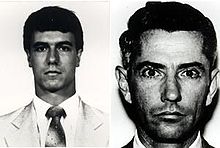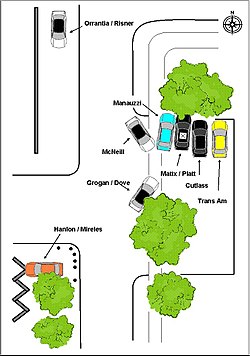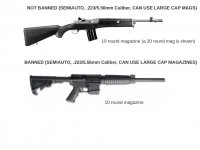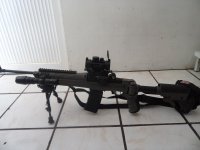Me encanta MexicoArmado. Sin embargo, la sección del foro para "Rifles Militares" siempre me ha molestado. Con demasiada frecuencia las discusiones de armas deportivas civiles son relegados a la sección militar.
El AR-15 es un arma de fuego civil. El Mini-14 es un arma de fuego civil.
Entiendo las leyes y las clasificaciones son diferentes en México y muchas armas civiles son para su uso por las fuerzas militares y la policía (uso exclusivo).
Pero para mí, siempre serán las armas civiles; solo los civiles mexicanos no pueden poseer ellos. La ley no cambian el rifle. Es lo que es, independientemente de lo que dicen los políticos. Estos rifles son diseñados para el mercado civil, pero el mercado no está abierta a mis hermanos mexicanos.
Modernos rifles deportivos son utilizados por civiles para el deporte, la competencia y la caza. A menos que el rifle tiene capaz de fuego busto o fuego automático, es una versión civil - no una versión militar. Ni son "rifles de asalto" a menos que sean capaces de fuego automático.

Editar para agregar:
Español es mi segundo idioma y creo que no me expreso correctamente. Sólo aquellos que NO son capaces de fuego automático o "burst fire" son versiones civiles. Es posible que un colector en el EE.UU. de poseer una ametralladora, pero sólo con un permiso especial, los impuestos y las tasas. La ametralladora debe ser una antigüedad. Quedan prohibidas todas las ametralladoras modernas hechas después de 1986. Es imposible, incluso para un colector con el permiso especial, para tener un moderno M4 / M16. Un rifle de batalla con fuego selecto (burst or full auto) hecho antes de 1986 cuesta un mínimo de $ 12,000 USD.
El AR-15 no debe ser confundido con el M16 / M4. La AR es semi-automático y diseñado para la población civil. El M4 / M16 es fuego selecto (burst o auto) y sólo para militares y policías.
Por supuesto, mi mensaje inicial fue parcialmente una broma, pero no tengo los conocimientos de idiomas ....










